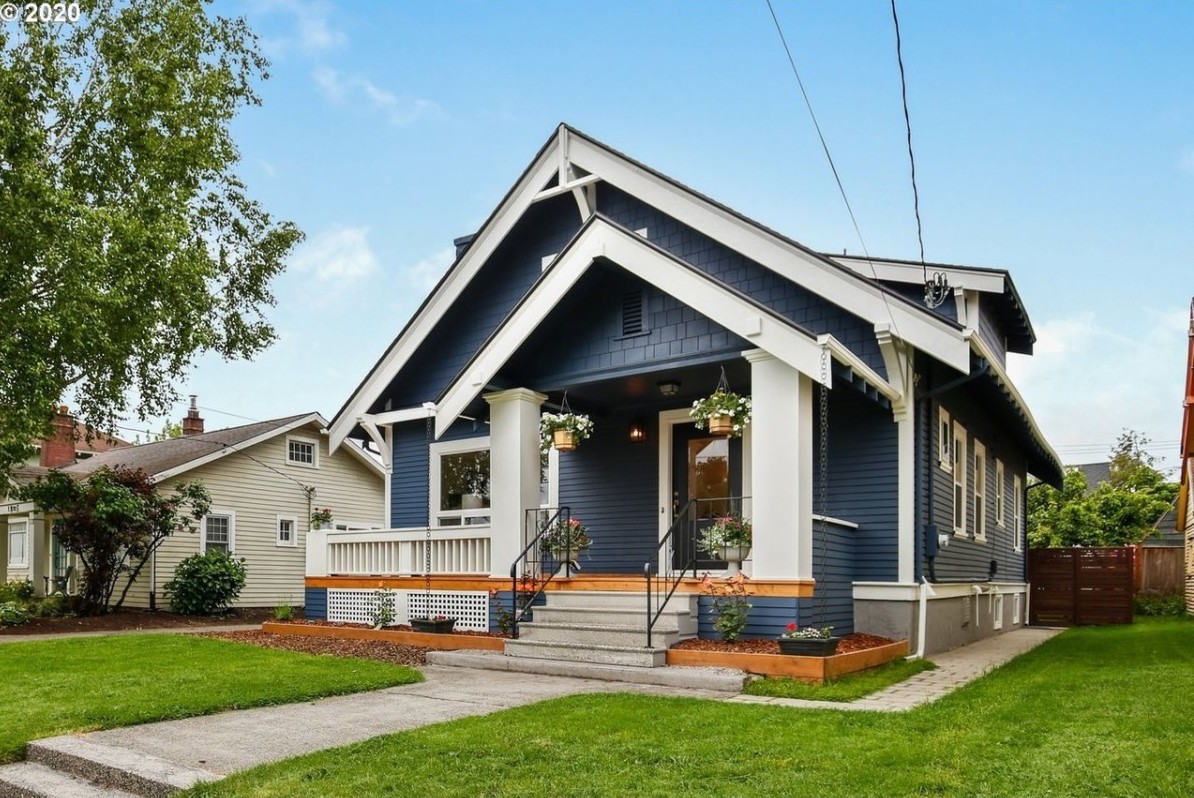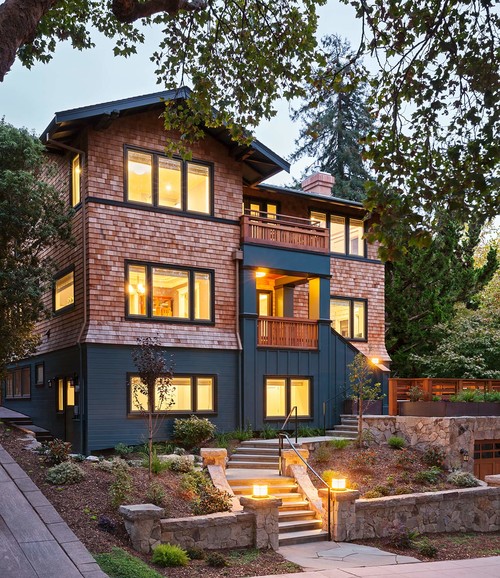The Role of Arts & & Crafts Architects in Elevating Architectural Solutions in Residential Layout
Arts and Crafts architects significantly affect residential style with their dedication to craftsmanship and sustainability. They focus on handcrafted details and all-natural products, which improve both aesthetics and area identity. By involving customers in the design procedure, these architects create one-of-a-kind living areas that resonate with personal tastes. This approach questions about the future trajectory of household architecture and its prospective effect on neighborhood characteristics. craftsman style house. What lies ahead for this ageless design viewpoint?

The Concepts of Arts and Crafts Architecture
The essence of Arts and Crafts architecture lies in its dedication to craftsmanship and simplicity. This building movement arised in the late 19th century as a feedback to automation, highlighting the value of handcrafted details and natural materials. The principles of Arts and Crafts architecture focus on performance and consistency with the atmosphere. Structures usually include low-pitched roofings, wide eaves, and exposed rafters, promoting a feeling of unity with nature.
Artisans played a considerable role in this design, frequently incorporating attractive aspects like discolored glass, ceramic tiles, and woodwork, which mirror neighborhood craftsmanship. The shade palette tends to be natural and suppressed, enabling buildings to blend effortlessly into their surroundings. On top of that, the design motivates open layout and common areas, fostering a sense of togetherness. Generally, the concepts of Arts and Crafts architecture commemorate the charm of simplicity and the relevance of human connection to both nature and community.

Lasting Practices in Residential Style
While the demand for ecologically responsible living continues to grow, sustainable methods in property design have actually obtained considerable traction amongst architects and homeowners alike. Architects are progressively integrating energy-efficient modern technologies and sustainable materials into their layouts, intending to decrease carbon impacts and boost energy preservation. Techniques such as passive solar design, green roof coverings, and rain harvesting systems are becoming basic elements of contemporary domestic architecture.
Furthermore, the choice of locally sourced products lessens transportation discharges and supports regional economic situations. Emphasis on natural light and air flow not just improves indoor air top quality however also minimizes dependence on fabricated lights and environment control systems. These lasting techniques mirror a dedication to preserving the environment while providing home owners with comfy, efficient home. As recognition of ecological issues grows, the assimilation of sustainability in domestic style is poised to come to be a specifying attribute of contemporary architecture, assisted by the principles established by Arts and Crafts architects.
Personalization and Personalization in Home Style
Modification and personalization in home style have become vital fads in response to the growing desire for one-of-a-kind living environments that reflect individual preferences and lifestyles. House owners increasingly look for to customize areas that resonate with their individual identities, bring about a much more purposeful link with their living areas. craftsman style house. This movement encourages architects to involve customers in the layout procedure, promoting partnership that guarantees the final end result symbolizes the property owner's vision
Elements such as check this site out bespoke layouts, personalized materials, and tailored coatings enable a diverse variety of expressions in household layout. Arts and Crafts architects play a crucial role in this evolution, emphasizing workmanship and top quality. Their concentrate on incorporating artistic components with performance warranties that each home is not only cosmetically pleasing however likewise distinctly suited to the citizens' requirements. Subsequently, this emphasis on personalization enhances the total property experience, producing rooms that are both personal and advice enduring.

The Influence of Arts and Crafts Architects on Neighborhood Aesthetics
As communities evolve, the impact of Arts and Crafts architects considerably shapes their visual landscape. By emphasizing handmade information, all-natural products, and typical building and construction methods, these architects produce homes that reverberate with their environments. Their styles usually include local flora, appearances, and colors, fostering a feeling of harmony in between constructed atmospheres and nature.
Furthermore, the Arts and Crafts movement advertises neighborhood identification with building continuity. By urging homeowners to take on comparable design principles, communities develop a natural character that enhances visual charm. This building uniformity not just enriches the aesthetic experience but also instills a sense of satisfaction among locals.
Furthermore, the concentrate on sustainability and workmanship in Arts and Crafts architecture aligns with contemporary worths, making these styles appropriate in modern setups. Inevitably, Arts and Crafts architects add considerably to the general beauty and cultural integrity of neighborhoods, leaving a lasting influence on their visual heritage.

Future Fads in Arts and Crafts Architecture
With a raising focus on sustainability and personalization, future patterns in Arts and Crafts architecture are positioned to blend typical craftsmanship with modern-day advancement - craftsman style house. Architects are most likely to prioritize environmentally friendly products, making use of reclaimed wood and natural rock to see this page improve the sustainability of domestic layouts. The combination of clever home technology will end up being typical, permitting for personalized living experiences without jeopardizing aesthetic integrity
The resurgence of artisanal strategies will certainly promote a restored appreciation for handmade aspects, such as bespoke cabinets and customized floor tile work. Future styles might additionally show a focus on community-oriented rooms, encouraging communication and link among locals. Outside living areas will gain importance, flawlessly incorporating nature into the home environment. As Arts and Crafts architecture evolves, it will continue to honor its roots while adjusting to modern demands, creating harmonious spaces that mirror individual worths and lifestyles.
Regularly Asked Questions
What Inspired the Arts and Crafts Motion in Architecture?
The Arts and Crafts activity in architecture was inspired by a response versus industrialization, emphasizing handmade high quality, natural materials, and a return to conventional craftsmanship, intending to produce harmonious, practical areas that celebrated virtuosity and originality.
How Do Arts and Crafts Architects Collaborate With Clients?
Arts and crafts architects collaborate with clients through open dialogue, prioritizing personal requirements and visual appeals. They stress workmanship and sustainability, cultivating a collaboration that integrates the customer's vision with the architect's expertise in style and materials.
What Products Are Generally Utilized in Arts and Crafts Homes?
Typical materials in Arts and Crafts homes include natural timber, rock, and block, stressing craftsmanship and organic appearances. These aspects create a warm, welcoming environment, showing the motion's commitment to top quality and simplicity in style.
Exactly how Do Arts and Crafts Designs Improve Indoor Living Spaces?
Arts and Crafts layouts improve indoor home by advertising natural light, open layout, and handcrafted details. These elements foster a cozy, inviting atmosphere, urging a link in between locals and their atmospheres via thoughtful, functional aesthetic appeals.
What Are Some Famous Examples of Arts and Crafts Architecture?
Famous instances of Arts and Crafts architecture include the Wager House, Greene and Greene's work of art in California, and the Robie Residence by Frank Lloyd Wright. These frameworks display handcrafted details and consistency with nature, specifying the movement's significance.